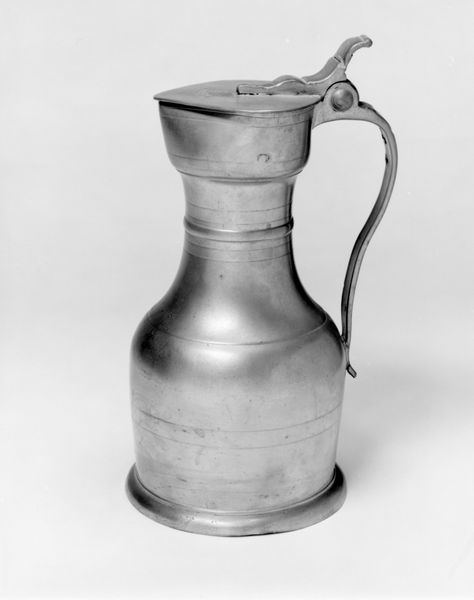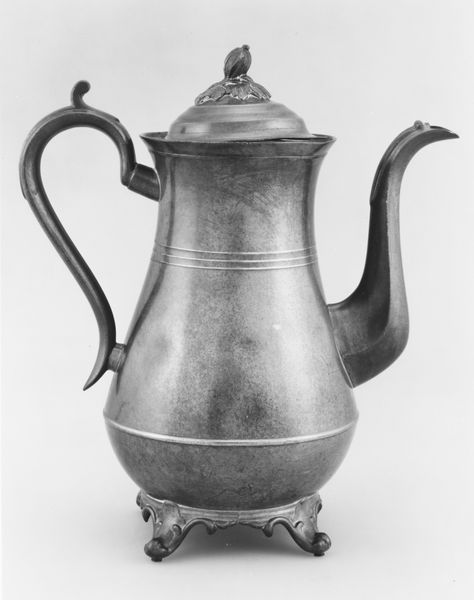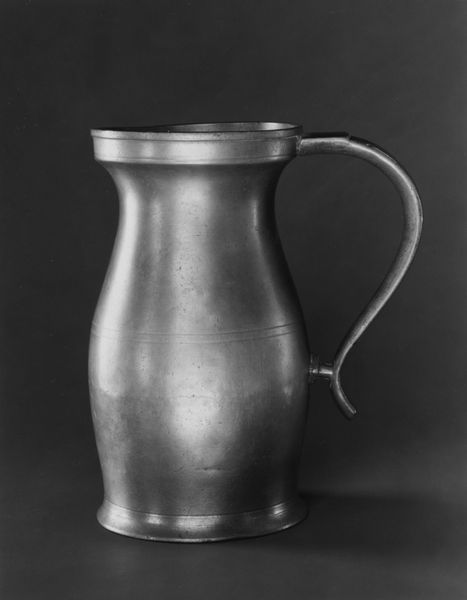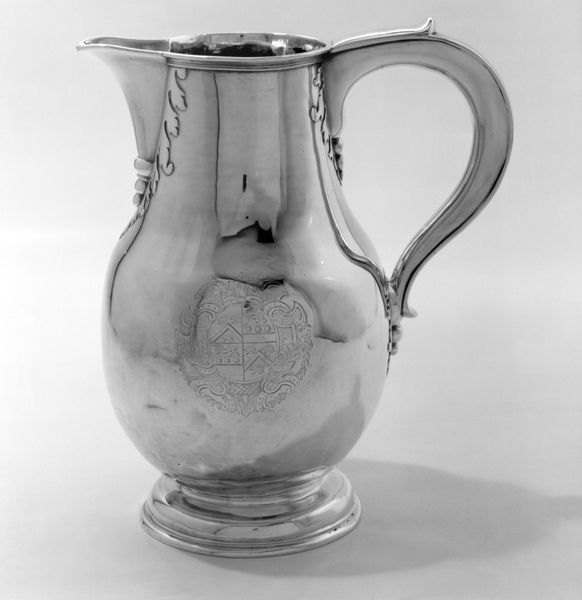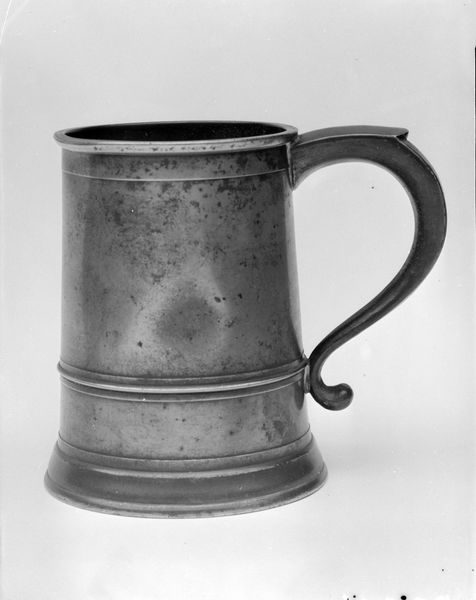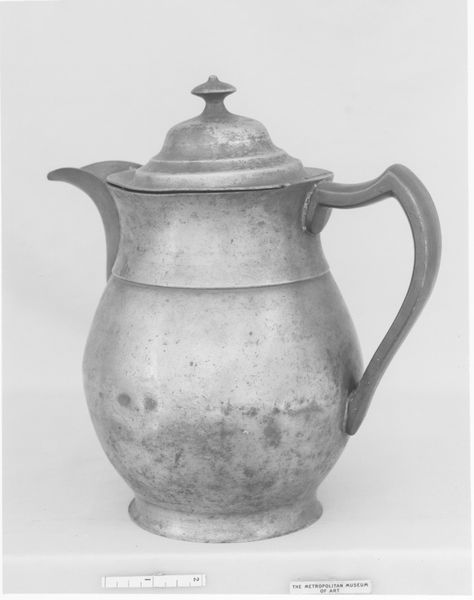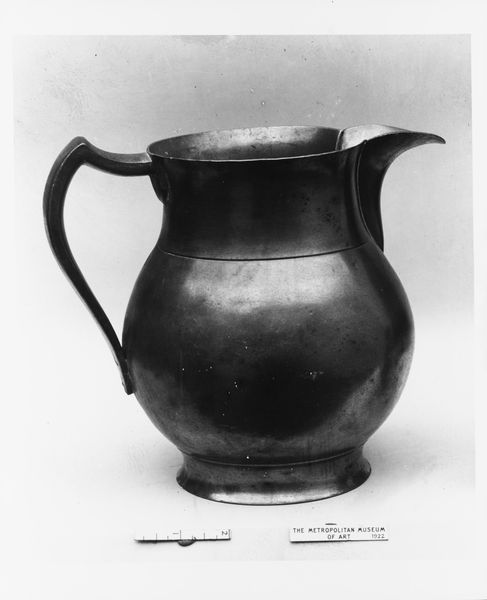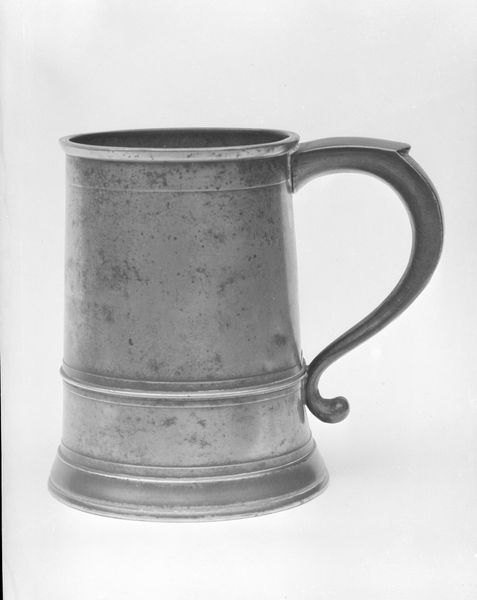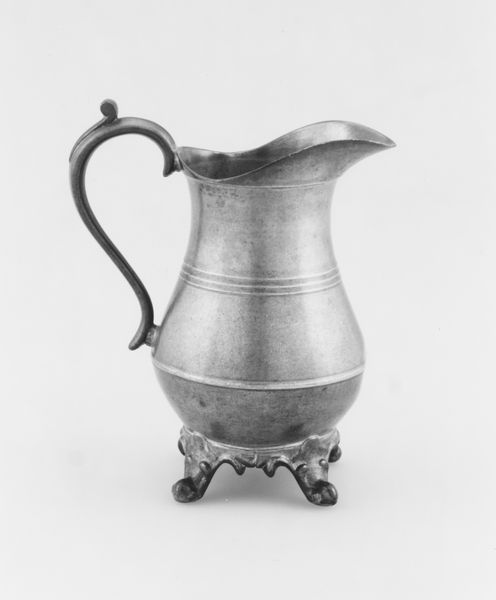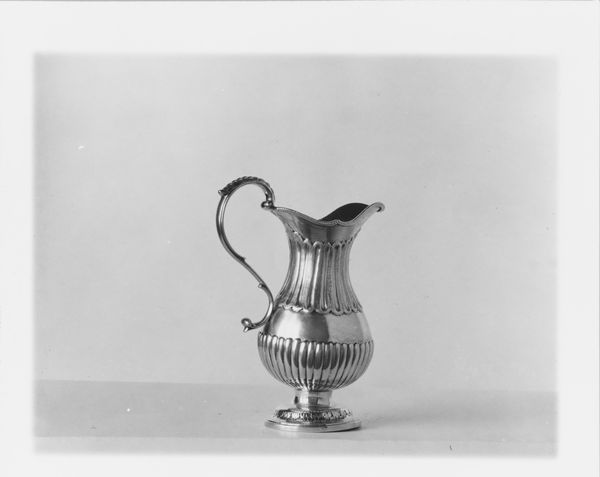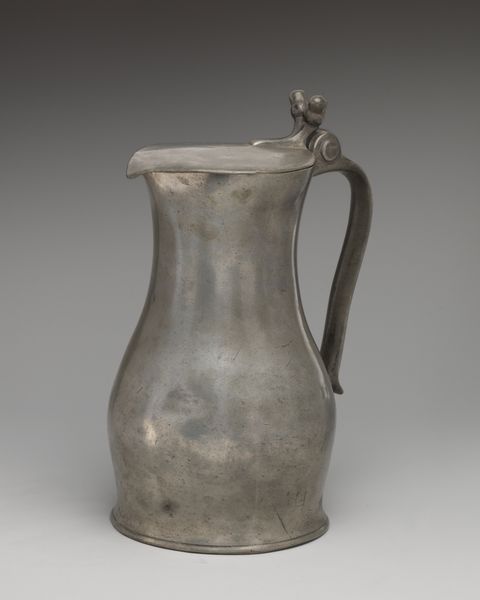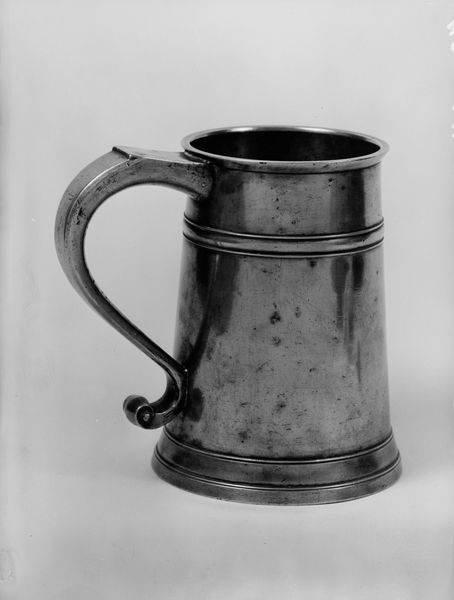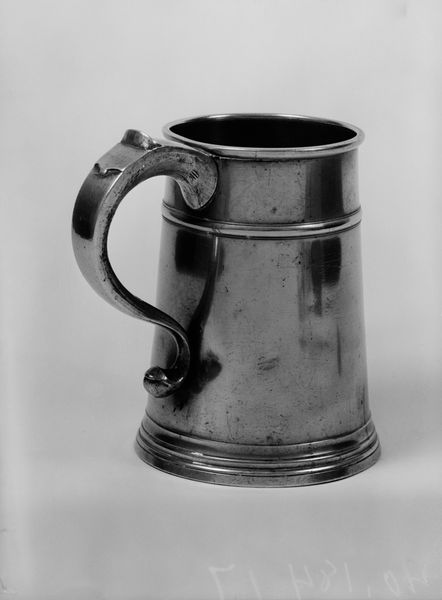
metal, ceramic, sculpture
#
baroque
#
metal
#
ceramic
#
stoneware
#
sculpture
Dimensions: 9 3/4 x 7 1/4 in. (24.8 x 18.4 cm)
Copyright: Public Domain
Editor: Here we have "Pitcher" by Frederick Bassett, estimated to be from 1700-1800. It's made of stoneware. It strikes me as quite simple, despite being from the Baroque period. It looks so humble. What do you make of it? Curator: Well, look at the material itself – stoneware. It wasn't prized like porcelain. This pitcher speaks volumes about production, labor, and class. Was this crafted for everyday use, or did it serve some symbolic function? Consider the maker too. Bassett was not just producing art but commodities. Editor: Commodities? So, its value lies in its function, not necessarily aesthetics? Curator: Exactly! While it might be argued whether it has any aesthetics appeal, the pitcher's baroque origins do inform that of craft: This piece prompts a reconsideration of hierarchies between high art and everyday objects. Think about its journey – the raw materials, the workshop, the consumer. Editor: So you’re focusing on its creation and consumption, rather than any artistic intention? Curator: Precisely. The "art" lies in the entire social and economic framework surrounding its making and usage. The question becomes: what sort of work was this pitcher doing for those who produced and consumed it? The metal parts too--what were they thinking and doing? Editor: That's really interesting! I hadn’t considered it that way, seeing it as a product rather than simply an object of beauty or art. It really changes my perspective on the object, as now its not so simple anymore. Curator: Good. Next time you see any type of creation, consider not only *what* it is but *how* it came to be. Then you’ll appreciate not just aesthetic labor, but economic context too.
Comments
No comments
Be the first to comment and join the conversation on the ultimate creative platform.
